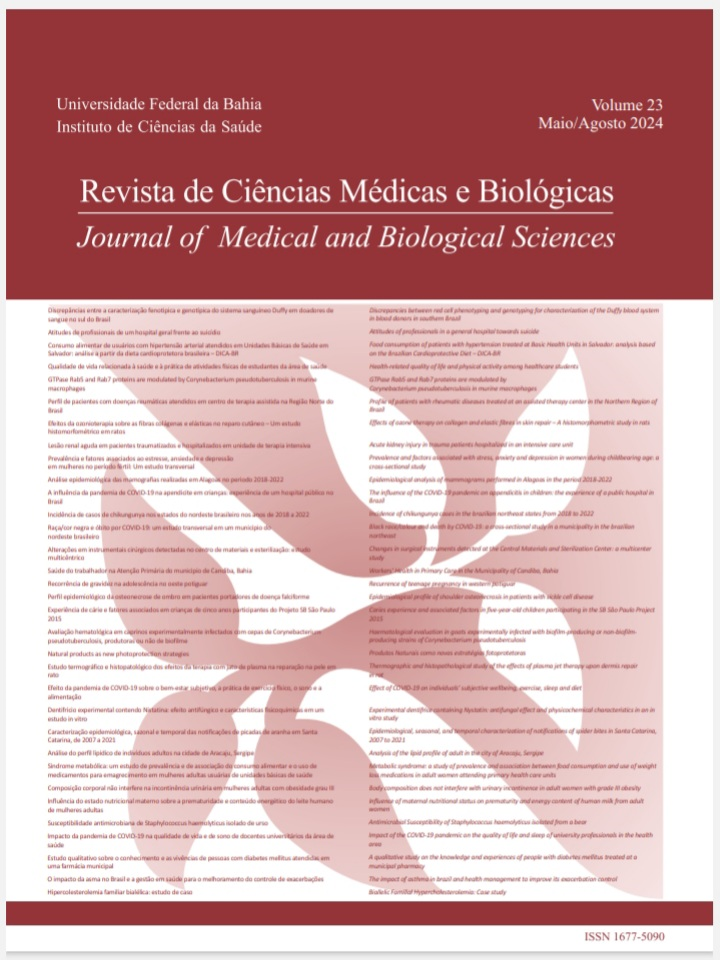Recurrence of teenage pregnancy in western Potiguar
DOI:
https://doi.org/10.9771/cmbio.v23i2.56458Keywords:
Adolescent Mothers, Teenage pregnancy, Adolescence, Basic Health IndicatorsAbstract
Objective: To analyze the proportion of recurrent deliveries in adolescence in the West Potiguar region, the epidemiological profile of adolescents and possible factors associated with the recurrence of deliveries. Materials and methods: Ecological, quantitative and cross-sectional study. Using data from adolescents aged 10 to 19 years who took part between the years 2006 and 2019 in the municipalities belonging to the West Potiguar region satisfied in SINASC/DATASUS, a descriptive analysis of the data was carried out. In addition, with the intention of testing the heterogeneity of the variables between the groups of primiparous and multipregnant adolescents, Pearson's chi-square test was used to assess the association between the variables that could influence the repetition of pregnancy, considered as having an association when the p ≤ 0.05. Results and discussion: it was found that 22% of deliveries in adolescents were performed in young people with a history of previous pregnancy. Young people who suffer from repeated pregnancies mostly have low education, live without a partner, do not represent prenatal care in a desirable way and belong to non-white races. In addition, there was an association of multi-pregnant adolescents with vaginal delivery, living without a partner, up to 7 years of study, up to 6 prenatal consultations, age group 15 to 19 years and non-white race. It was found that the highest rates of occurrence occur in municipalities with the worst social indicators. Adolescents who experience recurrent pregnancies are in a situation of greater social vulnerability. Health services must act by mapping these young people and implementing measures to prevent recurrence and provide social support.
Downloads
Downloads
Published
How to Cite
Issue
Section
License
Copyright (c) 2024 Journal of Medical and Biological Sciences

This work is licensed under a Creative Commons Attribution 4.0 International License.
The Journal of Medical and Biological Sciences reserves all copyrights of published works, including translations, allowing, however, their subsequent reproduction as transcription, with proper citation of source, through the Creative Commons license. The periodical has free and free access.


